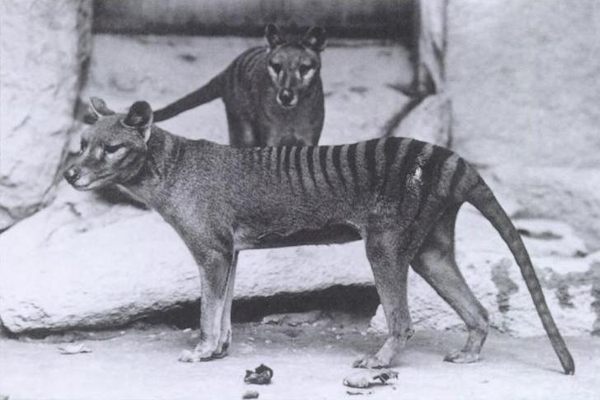Giant, Introduced Herbivores Could Be Helping ‘Rewild’ the World
In the anthropocene, maybe feral camels, wild donkeys, and cocaine hippos aren’t a bad thing.

Much of Australia’s native megafauna, including wombats the size of hippopotamuses and 10-foot tall kangaroos, has been extinct for thousands of years. Yet this continent-sized island is now home to eight introduced species of megafauna (defined as animals weighing more than 100 kilograms, or about 220 pounds), some of which are extinct in their original homes. Wild dromedary camels live alongside endangered water buffalo, while wild horses and sambar deer gambol in its plains and valleys. New research published in Ecography suggests that these out-of-place transplants may play an important role in “rewilding,” or filling vacant niches in, their ecosystems.
All over the world, large herbivores are finding success in unexpected places—and these populations sometimes have complicated origin stories. In Colombia, drug baron Pablo Escobar once famously owned a herd of hippos. Now, dozens of their descendants rampage around the countryside near his former home. The wild burros, or donkeys, of Arizona originated in Africa, and were brought to the United States by early prospectors, miners, and rangers. The population that calls the Sonoran Desert home are their abandoned progeny, left to run wild.
Previous research, the study says, has focussed on the negative aspects of introducing large species to potentially fragile ecosystems, with good reason. But there’s evidence to suggest that these non-native animals are often occupying the roles of other species that had been driven to extinction. They might eat vegetation that is too tough for smaller animals. The donkeys, for instance, dig groundwater wells over three feet deep, which provide water for more than 30 other species and river vegetation. “Conservation typically ignores these populations by defining them as alien or invasive,” study author Arian Wallach of the University of Technology Sydney’s Centre for Compassionate Conservation, told Australasian Science. “However, these populations are likely critical buffers against extinction, and there is growing evidence that they are making positive contributions in their new homes.”
Of the 76 megafauna species alive today, almost a third also live wild outside of their native homes, in which they may be threatened or extinct. It might not be the conservation we imagine, but these displacements may have benefits for both the animals and their new homes. There’s also evidence to suggest that ecosystems can adapt on the fly—such as dingoes in Australia finding a new food source in African donkeys, or mountain lions limiting wild horse populations in the United States. The anthropocene is in full swing, but don’t count nature out just yet.































Follow us on Twitter to get the latest on the world's hidden wonders.
Like us on Facebook to get the latest on the world's hidden wonders.
Follow us on Twitter Like us on Facebook